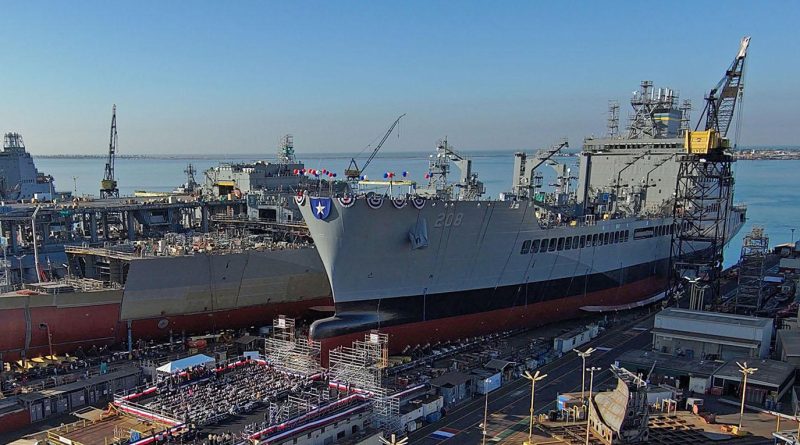How 3D printing is transforming US Navy shipbuilding
Subscribe to our free newsletter today to keep up to date with the latest manufacturing news.
The United States Navy faces growing pressure to modernize its fleet amid rising global maritime competition. With China surpassing the US in shipbuilding capacity, the Navy is turning to innovative solutions to maintain strategic parity. Among these is additive manufacturing, or 3D printing.
This technology offers the ability to reshape naval shipbuilding by reducing production cycles, lowering costs, and enabling on-demand manufacturing aligned with defense logistics. By incorporating 3D printing into its production framework, the Navy aims to build and maintain a larger, more agile fleet.
The shipbuilding disparity
One significant factor driving the Navy’s interest in additive manufacturing is the shipbuilding gap between the US and China. China operates the largest shipbuilding industry globally, producing warships and commercial vessels at a scale far beyond US output. This gap affects not only the number of vessels but also a nation’s capacity to respond swiftly to global events.
To address this, the Navy has outlined a 30-year shipbuilding strategy. Traditional manufacturing, with its complex supply chains and long lead times, cannot support the scale and speed required. Additive manufacturing can help by compressing production timelines and streamlining logistics. Components can be fabricated in-house within days, rather than relying on months-long supply chains.
Adoption of additive manufacturing
The Navy’s efforts are supported by institutions like the Institute for Advanced Learning and Research in Danville, Virginia. Through partnerships with defense contractors, this institute is leading the integration of 3D printing into naval production. The focus extends beyond creating parts to ensuring they meet strict military standards.
The Navy’s shipbuilding plan calls for expanding shipyards and incorporating digital technologies for rapid prototyping and precision manufacturing. 3D printing enables quick design iterations and the creation of test components without halting production. As shipyards adopt additive manufacturing, improvements in efficiency, reduced waste, and faster innovation are expected.
The Navy is also investing in workforce development to support this shift. Engineers and technicians are being trained in advanced printing systems and digital design. This ensures that innovation is matched by the capability to implement it effectively.
Benefits of 3D printing in shipbuilding
Introducing 3D printing into shipbuilding offers strategic advantages. The most immediate is the reduction in lead times for essential components. Traditional production can take months for specialized parts, especially those requiring custom tools or molds. With 3D printing, engineers can create parts directly from digital models.
Design flexibility is another advantage. Complex geometries, often too costly or impossible with conventional methods, can now be achieved efficiently. This allows for new ship designs that are lighter, stronger, and more energy efficient. On-demand manufacturing also means less inventory and reduced storage costs.
Cost reduction is a further benefit. While the initial investment in 3D printing infrastructure is high, long-term savings in materials, labor, and time are considerable. Waste is minimized because material is added layer by layer, not subtracted.
Challenges and considerations
Despite the benefits, several challenges must be addressed. Certification and quality assurance of printed parts remain major concerns. Components used in military operations must meet stringent standards, and failure is not an option. Extensive testing and regulatory oversight are necessary.
Material limitations are another issue. Though metal 3D printing is advancing, only a narrow range of materials meets Navy requirements. Ongoing research aims to develop suitable alloys and composites.
Integrating 3D printing into current shipyards and logistics systems requires restructuring. This involves updating workflows, retraining staff, and modernizing infrastructure. Resistance to change and entrenched processes can slow progress.
Cybersecurity is also critical. Since 3D printing relies on digital designs, securing these files against tampering or theft is essential. Compromised files could lead to faulty parts or leak sensitive information.
The Navy’s investment in 3D printing marks a shift in defense manufacturing. Though challenges remain, 3D printing is poised to become central to future naval operations. As technology advances, its applications will expand, from printing modular systems onsite to incorporating AI-driven design.
These innovations are likely to influence commercial sectors as well. Defense research often spills into industries like aerospace and automotive, driving broader technological progress. By adopting 3D printing, the Navy is not only enhancing its capabilities but also contributing to national industrial growth.
Sources:
